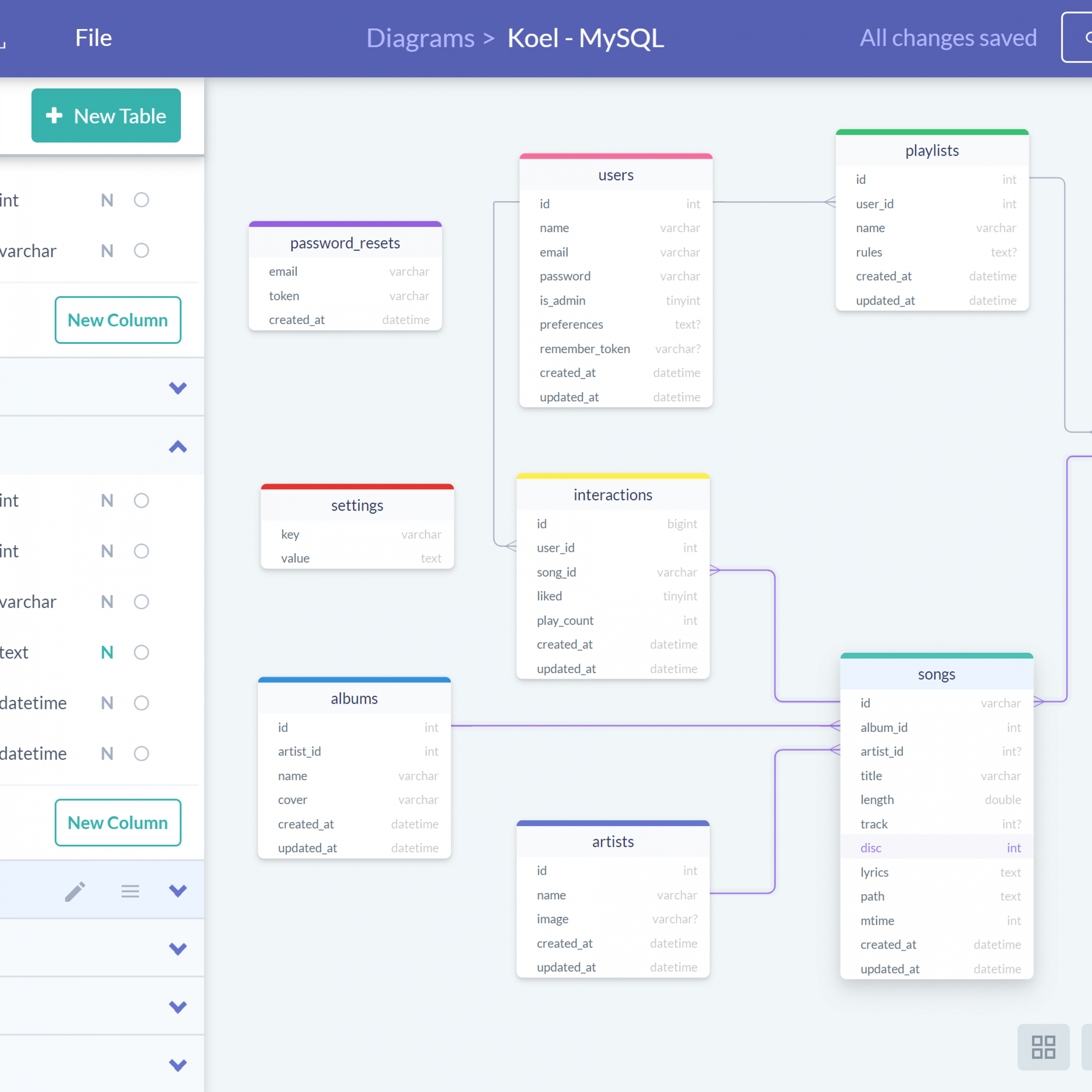Table Of Content

Designers create database schemas to give other database users, such as programmers and analysts, a logical understanding of data. Database schema design — sometimes called SQL schema design — refers to the practices and strategies for constructing a database schema. You can think of database schema design as a blueprint for storing massive amounts of information in a database. The schema is an abstract structure or outline representing the logical view of the database as a whole. Defining data types and the relationships between them, database schema design makes data much easier to retrieve, consume, manipulate, and interpret.
A repository for the publication and sharing of heterogeneous materials data Scientific Data - Nature.com
A repository for the publication and sharing of heterogeneous materials data Scientific Data.
Posted: Tue, 27 Dec 2022 08:00:00 GMT [source]
Table of contents
The conceptual database schema is the highest level of abstraction that focuses on describing the main entities, attributes, and relationships included in the database design. They organize data storage and define relationships between data elements to streamline queries and reporting. Analytic engines can then join data sources and perform aggregations more efficiently.
Logical Schema
Physical schema is the lowest form of abstraction with regards to the schema. In a customer table, for example, the primary key is likely to be a customer ID, and the table would likely contain information such as a customer’s name, address, credit card number, and so on. A Foreign Key is a column or set of columns in one table that refers to primary key columns in another. For example, an employee record might include a foreign key based on the employee’s Social Security number, which is the primary key in an employee earnings table. A database schema design can exist as both a visual representation and as a collection of formulas or use constraints that govern a database. Depending on the database system, developers will then express these formulas in different data definition languages.
Create a Physical Design
Its schema-on-read method infers and implements the schema without requiring engineers and developers to define it, freeing up time for other tasks. A relational database model has no central or fact table but numerous tables that relate to each other in multiple ways. If you are looking for a cutting-edge tool to help you in your data management, go for Estuary Flow.
Supports these relational DBMS
Also, integrity constraints like primary keys, foreign keys, and unique constraints help maintain data accuracy. The logical design defines primary keys, foreign keys, and unique constraints, ensuring precision. It serves as a bridge between the conceptual model and the physical implementation of the database, providing a detailed overview that guides the development process. Following these practices helps in creating a schema that is efficient, secure, and scalable, facilitating easier data management and retrieval. This organization includes arranging database entities like field names, tables, and data types and how these entities relate. Since database schemas provide a clear logical outline for how data is stored, administrators can validate data in a secure and organized manner.
Whatever methodology your organization chooses to handle your data, StreamSets can help. Check out patterns in our community, or join in learning in StreamSets Academy for free today. Build database skills through courses within the IBM Cloud Professional Architect curriculum. The app displays the show times for the selected play along with its synopsis, cast, director(s), ticket prices, and any other relevant information. The app shows the total price of the booked seats and refers the customer to the payment and check-out module. You can also have a look at the unbeatable pricing that will help you choose the right plan for your business needs.
Before implementing the schema in a production environment, thoroughly test it with sample data. Continuous testing and refinement are essential for ensuring the database meets the evolving needs of the application. We also have an extra column, is_main_author, of type boolean—that is, it can be true or false and indicates whether a given author is the main author of the book specified in the relationship. In case you want to integrate data into your desired Database/destination, then Hevo Data is the right choice for you!
Ways to Bucket Data in SQL During ETL
Creating various tables in your database without an idea of how they relate to themselves often creates the risk of developing orphan records and no enforcement of referential integrity. Referential integrity ensures that columns in tables having a relationship share some common value. An ER diagram visualizes relationships between entities in your database and helps engineers or database engineers identify flaws or errors in your schema design before production. In an ERD, a rectangle represents an entity, and a diamond represents a relationship between entities. Table relationships often involve a primary key-foreign key relationship, forming the basis for multi-table querying behavior. In the physical diagram, the schema structure is defined according to the peculiarities of a given relational database management system (RDBMS).
The snowflake schema is a variation of the star schema in which dimension tables are further broken down into sub-dimensions, creating a branching structure that resembles a snowflake. Database schema design patterns offer a variety of structures, each well-suited for different types of data and usage scenarios. Choosing the correct design pattern can make data storage and retrieval more efficient. Let’s look at 5 common schema design patterns, each with its unique characteristics and applications.
And designing database schemas is one of the very first and important steps to start developing any software/website. DBDesigner is a great tool when it comes to creating database schemas for your application. It allows you to create any number of tables you want (as far as I am concerned).
The goal of establishing relationships is to ensure data consistency and maintain referential integrity. Referential integrity ensures that relationships between tables are accurately maintained, and no invalid or orphaned data exists. Let’s explore some relationship types and how to enforce relationships using DbVisualizer, allowing you to establish referential integrity in your database schema. Now that we understand the importance and benefits of a well-designed database schema, let's explore some practical examples to deepen our understanding.
The physical schema is the tangible database design implementation, optimizing its performance in the real-world environment. Database schema design is crucial as it determines the efficiency, reliability, and scalability of a database system. A well-designed schema ensures data consistency, simplifies data management tasks, enhances performance, and allows for easy adaptation to changing requirements. The design of a database schema influences how efficiently your database runs and how quickly you can retrieve information. This article offers an overview of how database schema design works, as well as examples and best practices to help you optimize database schema design.
Kudos on successfully navigating through this beginner's comprehensive tutorial on database schema design! This guide emphasized the crucial role a well-structured database schema plays in both application development and data administration. By following these best practices, you can establish strong relationships and ensure referential integrity in your database schema.
The platform's unique edge lies in its seamless integration with popular cloud storage services, ensuring accessibility and ease of sharing. It supports real-time collaboration and integration with other tools such as Google Workspace, Microsoft Office, etc. Integrate.io is a powerful, feature-rich no-code data pipeline platform that builds data pipelines from databases and other sources to a centralized target repository in the cloud. With more than 100 pre-built connectors and integrations and a user-friendly drag-and-drop interface, it’s never been easier to integrate enterprise data. Developers and database administrators can then convert these schema tables into SQL code.
Follow industry best practices to achieve optimal data storage and retrieval performance. With the schema we designed so far, we're able to store and manage information about a simple bookstore. Keep in mind that a real-world schema for a bookstore would probably be much more complex. However, our example should be enough to give you an idea of what is involved in creating a database schema. That's why it's so important to learn principles and best practices when it comes to database schema design. "Great database schema design" is certainly easier said than done, though.

No comments:
Post a Comment